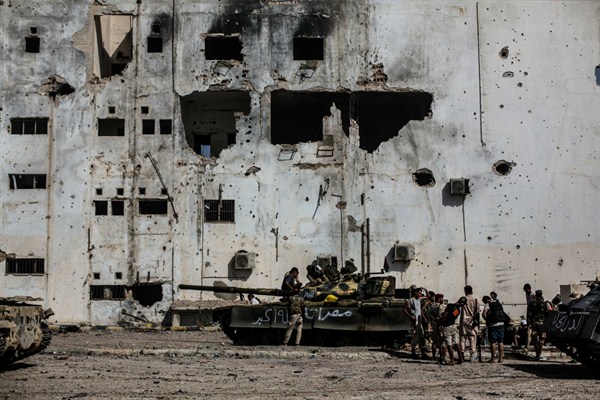With the self-proclaimed Islamic State besieged in Mosul and on the defensive in parts of Syria, the future of the group’s network beyond its core territory has been thrown into question. At its peak in 2014 and early 2015, the Islamic State established affiliates across the Middle East and North Africa that it labeled “provinces,” or wilayat, rapidly increasing its operational reach and influence. But with its senior leadership now facing considerable pressure in both Iraq and Syria, it is unclear whether the Islamic State will be able to maintain communications and organizational ties with these affiliates abroad. Moreover, as the Islamic State continues to lose territory, its allies may try to distance themselves from the group’s flagging brand.
The Islamic State’s recent travails in North Africa offer a telling snapshot of the challenges it is likely to face in maintaining its global presence. In the past six months, it has suffered both military defeats and defections in North Africa, leaving its network in the region fragmented. The biggest blow to its regional ambitions was the loss of the central Libyan city of Sirte, the Islamic State’s most promising outpost beyond Syria and Iraq. Meanwhile, jihadi factions in Tunisia and Algeria, facing intense pressure from state security forces, are wavering in their commitments. These developments will likely benefit al-Qaida, which is positioning itself to absorb the Islamic State’s defectors.
The defeat in Sirte derailed the Islamic State’s North African expansion strategy. Sirte had been its primary hub in North Africa, with the group investing considerable resources in the city. In 2015 and early 2016, senior leadership sent several high-ranking officials from Syria and Iraq to reinforce operations there, including Abu Omar al-Shishani, at the time the Islamic State’s most influential military commander; Turki al-Binali, a prominent religious official; and Abu Ali al-Anbari, who is believed to have served as Abu Bakr al-Baghdadi’s deputy until his death in March 2016. The Islamic State reportedly redirected several hundred foreign fighters originally destined for Syria and Iraq to Libya. These measures suggest that the Islamic State viewed Sirte as a beachhead from which to expand its presence into other parts of North Africa—and possibly even as a fallback option should Raqqa and Mosul fall.

